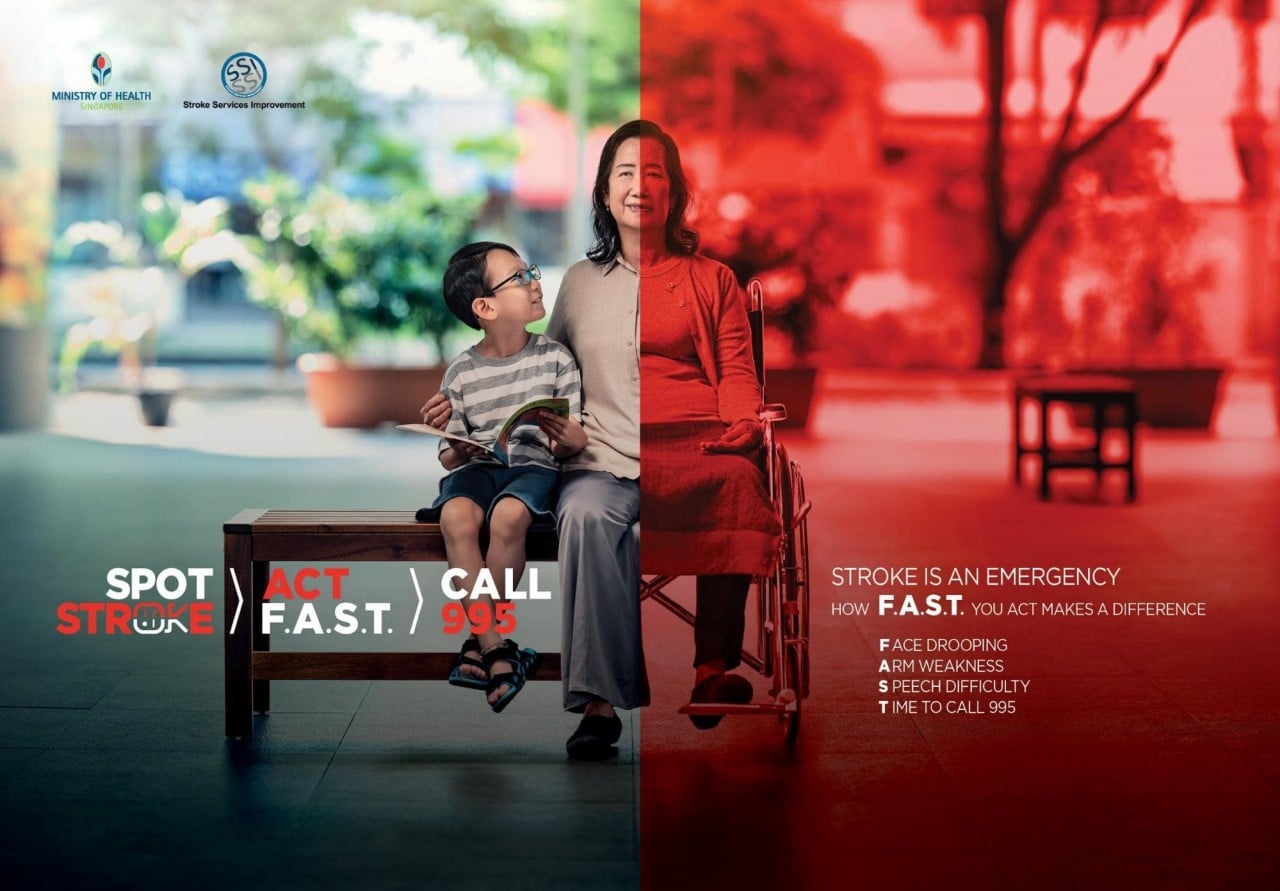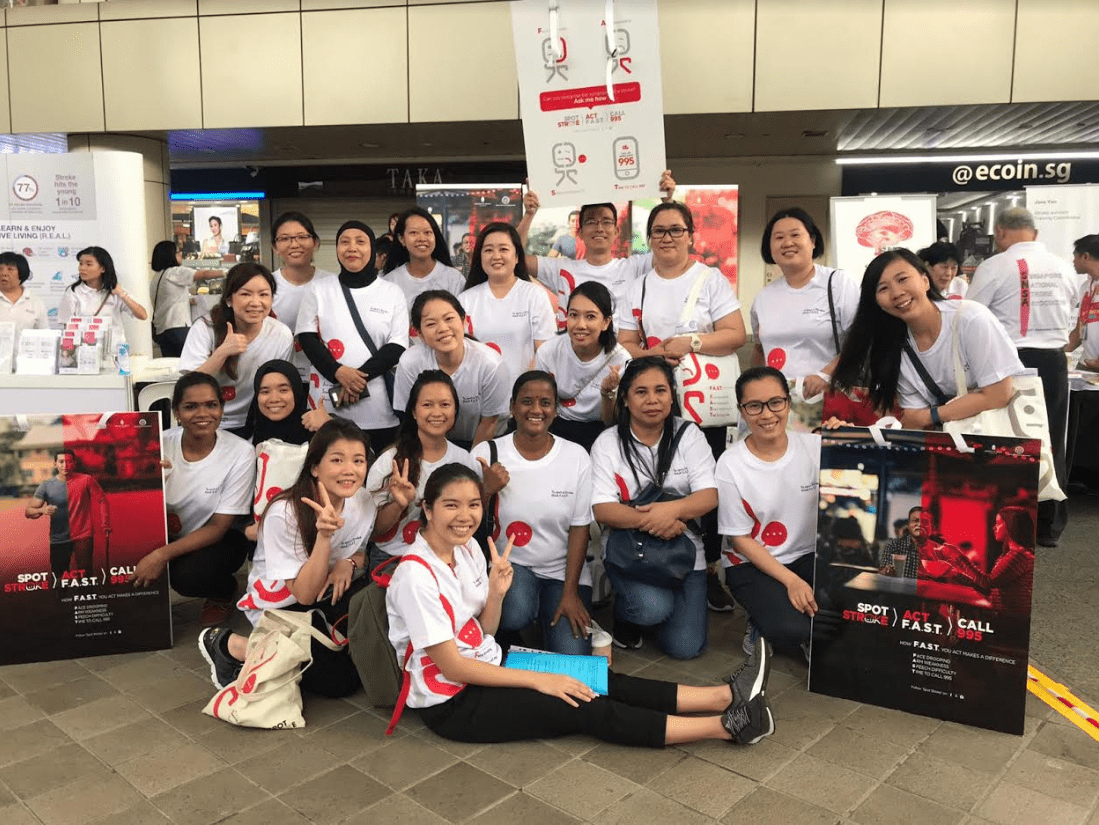Symptoms of stroke and what to do to save a life
On the list of things we worry about on a day-to-day basis, strokes aren’t usually a matter that receives regular contemplation. But the fact remains that it’s a serious medical condition that could lead to permanent impairment, a startling 1 in 6 people will get a stroke in their lifetime, according to the World Stroke Campaign.
29th October is World Stroke Day, and there’s no better time to educate ourselves on how to spot a stroke, and what regular folks like us with no medical training can do to make a difference.
Want to save a life from potential paralysis? Here’s what to look out for.
Remembering F.A.S.T
An essential acronym to remember is F.A.S.T. – (Face, Arms, Speech, Time). Not only does it highlight the importance of early discovery of and speedy action in response to a stroke, it’s also a guiding checklist for tell-tale stroke onsets.
 Image credit: Spot Stroke
Image credit: Spot Stroke
1. Face – Does the face droop on one side?
If you can’t immediately tell the difference when looking at somebody’s neutral expression, get them to flash a smile at you. It should then become clear whether both sides of their mouth are able to curve upwards, or one side remains stubbornly hanging down.
2. Arms – Can they lift up both arms?
Similar to the face, one side of the body may become weakened. Tell the person to raise both arms. In the event that a stroke hasn’t occurred, this should be effortless. But if one arm drifts downward and is difficult to raise any further, something is definitely amiss.
3. Speech – Can you understand what they’re saying?
A frightening aspect of suffering a stroke is that it has a great impact on the speech, causing great difficulty in speaking normally. Ask the person to repeat a simple phrase, and look out for signs of clumsy oral movements and slurred delivery.
4. Time – Call 995 immediately, don’t waste ANY time.
In the event that you spot any one of the signs, don’t second guess and just dial 995 immediately to call for an ambulance.
If you are alone and you spot these symptoms on yourself, do not wait for your family to come home, and do not attempt to self-medicate or visit a GP, or wait for the symptoms to go away. Call up an ambulance to your location, right away!
Remember as many details as you can of the stroke onset
The situation will be stressful, and your nerves will kick into overdrive mode trying to help yourself or a loved one. Nevertheless, make sure to take note of all details about the stroke so you can report the information to the medical practitioners.
Stroke is an emergency that demands immediate medical attention. Factors such as the time at which the first symptom occurs can allow doctors to make more informed treatment decisions, providing better chances of recovery as a result.
How to prevent permanent damage from strokes
- Face
- Arms
- Speech
- Time
Commit the F.A.S.T acronym to memory and you’ll be prepared to detect the onset of a stroke in the quickest time possible. Every second counts, and leaping into action instead of frantically struggling to Google what to do is potentially going to save a life. It can happen to anyone, at any age.
Timely action by calling 995 for immediate medical attention is key to preventing serious complications resulting from stroke, so make sure to always act F.A.S.T in the event of a stroke.
 The Stroke Services Improvement team and its volunteers, educating the public on stroke awareness. Image credit: Spot Stroke
The Stroke Services Improvement team and its volunteers, educating the public on stroke awareness. Image credit: Spot Stroke
Learn more about stroke awareness and prevention here.
This post was brought to you by Stroke Services Improvement.